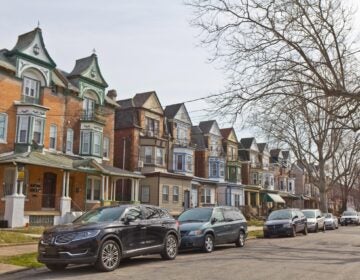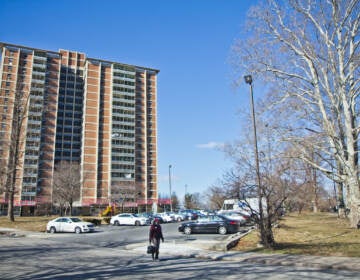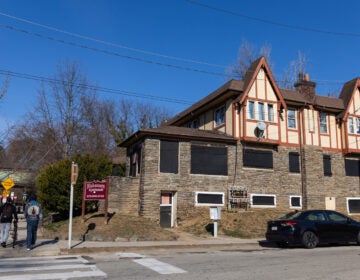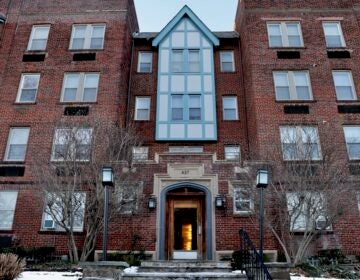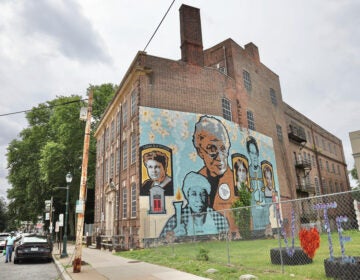Wayne Junction is quietly booming. Can it last?
Steps from the Wayne Junction Station, at the southern border of Germantown, sits a large empty lot surrounded by the neighborhood’s industrial past and unfolding future.
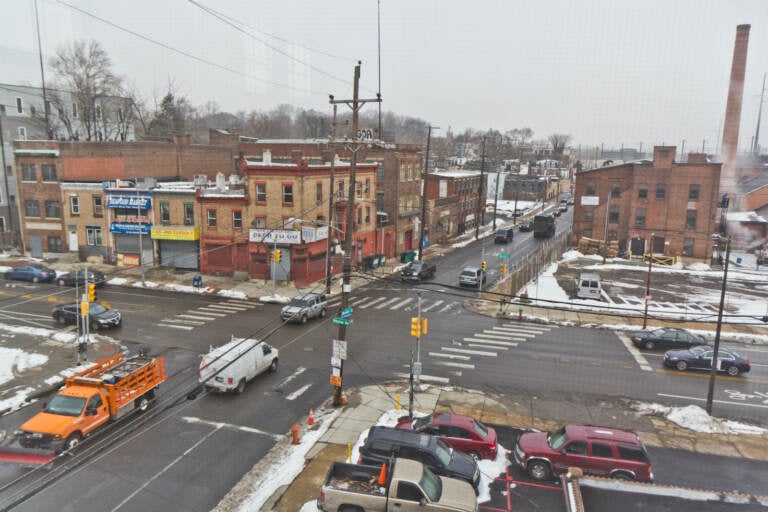
Wayne Junction in Germantown in February 2022. (Kimberly Paynter/WHYY)
Steps from the Wayne Junction Station, at the southern border of Germantown, sits a large empty lot surrounded by the neighborhood’s industrial past and unfolding future. Last home to an addiction treatment center, the grassy plot on Berkley Street will soon be part of a six-story apartment building, the signature project of an ambitious effort to revitalize a pocket of Philadelphia that appears poised for it. In addition to the refurbished train station, which serves six Regional Rail lines, the area sits between two once-thriving commercial corridors.
Some nearby neighbors have mixed feelings about the $20 million project — and the broader effort to make the area a hub for retail, trendy restaurants, and market-rate housing Instagram-ready with pendant lights and brick walls painted over in clean, bright white. But Ken Weinstein, the well-known real estate developer behind the apartment building and more than a dozen forthcoming projects here, is decidedly bullish on his investments and what they’ll bring to a section of the city slowly regenerating after getting hard hit by the collapse of manufacturing and redlining. His development also comes as Germantown sees significant change driven by a host of developers. Just down the block, Mosaic Development Partners has converted a medical supply manufacturing facility into a complex featuring apartments, a day care center, a cafe, and another restaurant.
Weinstein chose to invest heavily in this section of southwest Germantown because he believes it can be Northwest Philadelphia’s next thriving neighborhood. If, of course, he and others can successfully write a new chapter for its blighted historic properties, many of which date back to the late 19th century.
“We feel it’s a must to find new uses for these buildings because otherwise they’re going to sit vacant for many years waiting for industry to come back, which is just not happening,” said Weinstein during a recent tour of the area.
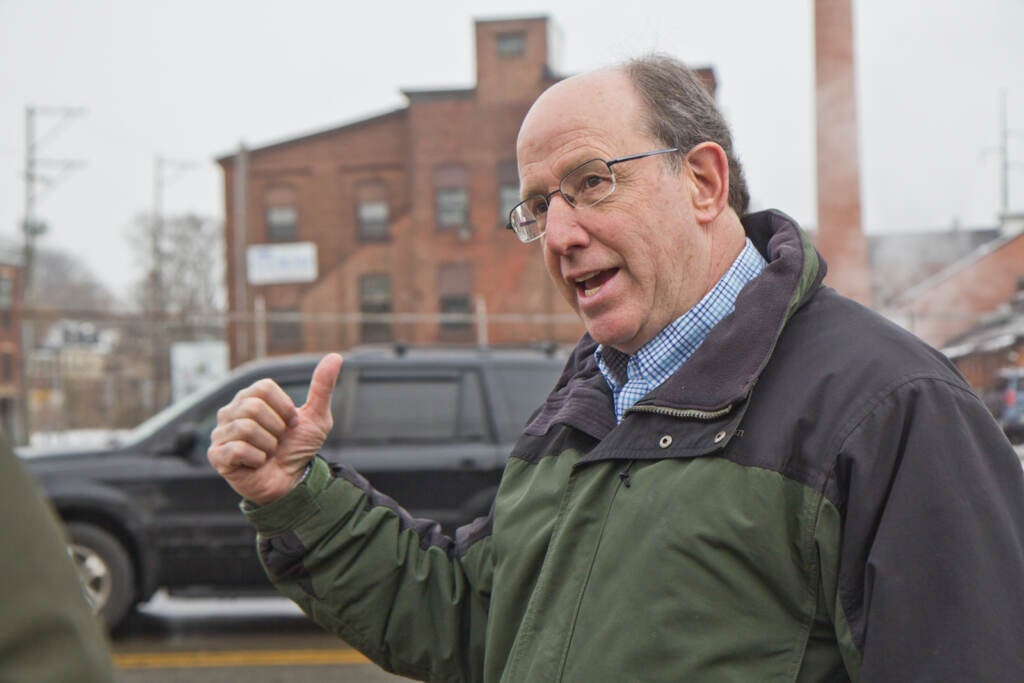
A historic area in flux
Weinstein began investing in the area, a historically Black section of the city, in 2011, though his development work in Germantown goes back decades.
The first phase of the revitalization project wrapped up last year. It includes a craft brewery and bar and a barbecue restaurant, which occupy a former pencil factory, as well as an on-site retail bakery up the road. On Saturday, there will be an open house for the soon-to-be-completed Autograph Apartments, a 32-unit building named for the Max Levy Autograph Co. that once occupied the property. It’s the first of two market-rate apartment buildings Weinstein has planned for the neighborhood, including the one coming to the lot on Berkley Street, which Weinstein has named the Wayne Junction Diner Apartments, a nod to the Wayne Junction Diner that used to sit around the corner.
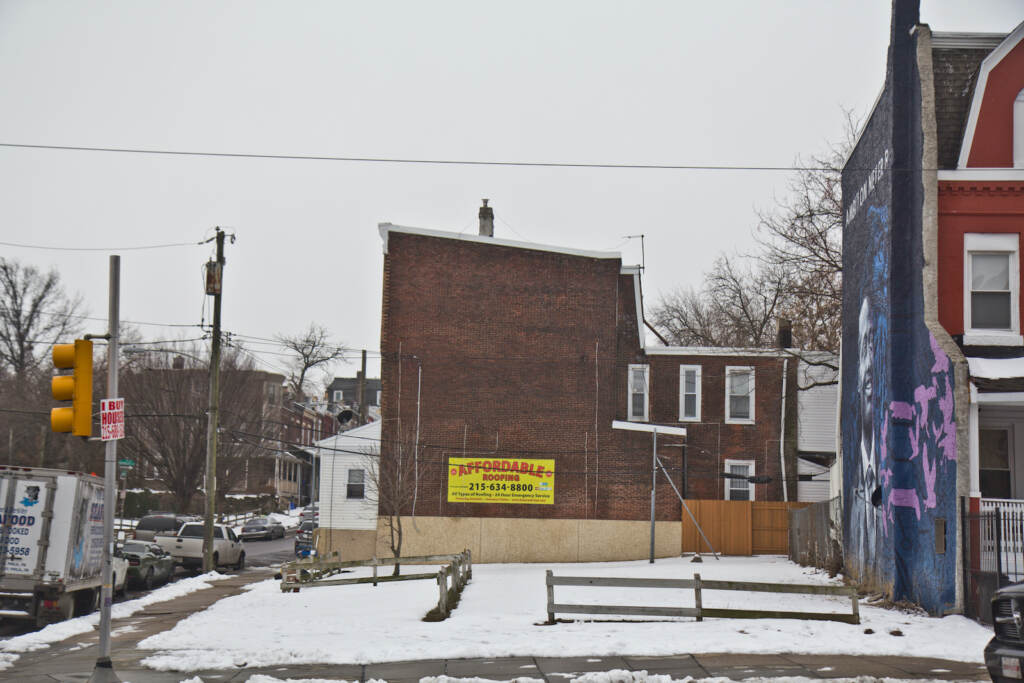
To date, Weinstein has purchased a total of 13 properties in the area. Nearly all of the projects are examples of what developers refer to as adaptive reuse, occupying restored factories and warehouse structures.
The Diner project, Weinstein’s biggest to date, stands as the exception. The 143-unit building will be built from the ground up. Plans include ground-floor commercial space, including a diner built directly into the property, as well as a large parking garage and roof deck.
“We saw this as a good opportunity to bring together a lot of the adaptive reuse projects both east of this property and west of this property,” said the developer who ran a diner in nearby Mt. Airy for two decades.
Once completed, the apartment building will nearly touch Attic Brewery Company, the brainchild of Laura and Todd Lacey, who opened the award-winning business inside the former pencil factory in January 2020. They opened their business after moving away from Germantown and then returning to lay down roots in a section of Northwest Philadelphia that was new to them. The couple bought a home within walking distance of the brewery — their first business.
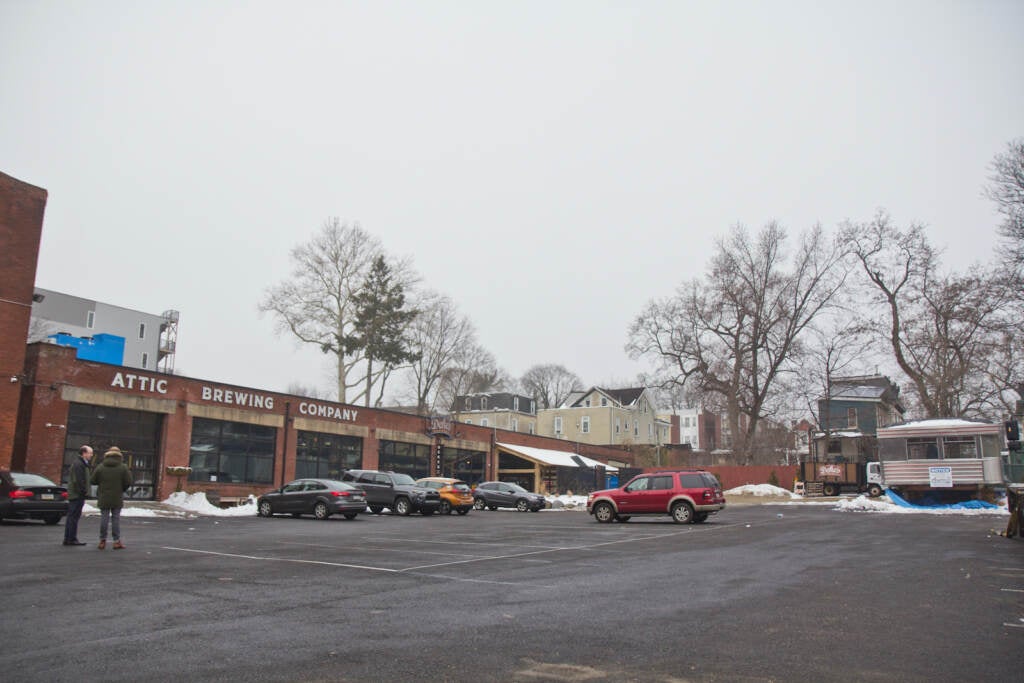
Despite opening in a pandemic, Laura Lacey said the couple has seen a tremendous response.
And yet the big apartment building going up next door doesn’t make Lacey smile. When construction is expected to be complete two years down the road, the property may be full of customers. But Lacey said she’s more focused on what the project may mean for her slice of Wayne Junction, where she and her husband invested their life’s savings.
To Lacey, the roughly 45,000-square-foot lot — and the neighborhood — would be best served by business, which she said would help solidify the area as a destination for locally driven shopping and entertainment, but also a source of well-paying jobs, something the low-income neighborhood could really use.
Why use the Diner lot for apartments? Apartments can go anywhere, she said.
“Our goal was that when people would come and visit Philadelphia and they’d ask their hotels in Center City, ‘Where do I need to go? What should I see?’ That we want them to say ‘You should totally take a trip out to Germantown. Attic Brewing Company is out there and it’s amazing. You can rent a bike. Check out a historic site. There’s always live music,’” she said.
For Lacey, her vision for the neighborhood puts her at odds with Weinstein, her landlord. Two years into her five-year lease, she said she’s not sure what she’ll do when time is up. At the moment, she can’t afford to move the brewery.
“It feels a little bit like David and Goliath,” she said. “We’re up against somebody who has all the money and resources and unfortunately we’re in a position where they believe what they’re doing is right, and we just kind of feel like we have to go along with it.”
For his part, Weinstein said he believes in using a variety of kinds of development to revitalize an area. Plus, it’s challenging to finance large commercial projects if there isn’t a substantial residential component, he noted.
“And people have said they would like to live in and near Wayne Junction so that they can roll out of bed, get on the train, go to their jobs around the region,” Weinstein said, emphasizing that the commuter-friendly Wayne Junction train station serves as a major draw for development.
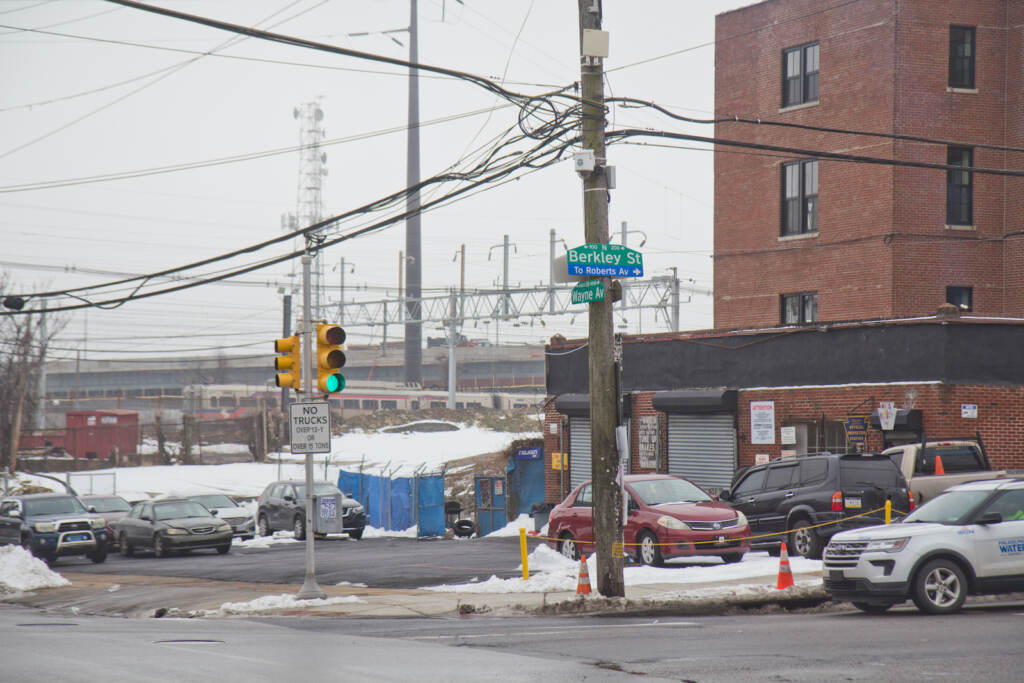
Investment driving a ‘steady increase’ in values
Vallia Lateef has always known Germantown “as home.” She grew up there in the 60s and 70s and now lives in a house less than a block away from Wayne Junction Station. She purchased it from a family friend who was still living alone into her 90s. Lateef took over the house after the friend left for an assisted living facility.
Lateef is less skeptical of Wayne Junction Diner Apartments, and the other projects, than some of her neighbors.In general, she sees the recent development in the neighborhood as a net positive, particularly for a place that looked so unwelcoming when she bought her house in 2014.
Still, her priority is the well-being of the area’s existing businesses and residents.
“My antennae is up, but I am also trying to be a little bit open to the possibility that this could work for the benefit of the people,” Lateef said. “I don’t think things are too far gone.”
It does concern her, however, that she and so many of her neighbors are receiving so many inquiries about their homes and whether they want to sell them. Lateef said she is constantly getting text messages from unknown numbers.
It makes her feel like she’s in a fish bowl. “And everyone is watching for what’s going to happen [to the neighborhood],” she said.
Lateef doesn’t point the finger at Weinstein or anything in particular. She just wants to stay prepared for whatever change will come — for better or for worse.
Investment is already driving change in the neighborhood.
Over the last decade, the volume of home sales in the area has increased at a pace much faster than the city as whole during that stretch, according to data from the Reinvestment Fund. At the same time, the median sale price for homes has increased by more than 200% to nearly $90,000.
The total is far below the median sale price for the city, but Emily Dowdall, the Fund’s policy director, said the jump shows the area is stabilizing as a result of recent development projects on either side of the Germantown border, as well as the overhaul of Wayne Junction Station.
“There is some evidence that this is yielding the kind of results you would want to see in reinvestment, where the market is not red hot, we’re not seeing hyperinflation of prices. But you’re seeing a steady increase over time and also an increase in sales activity. So what had been sort of a stagnant market is now seeing a healthier amount of churn,” said Dowdall.
She said this is happening with incomes staying steady, meaning there are no signs of a changing population.
“[There is] no indication of rapid gentrification or displacement at this point,” said Dowdall.

Subscribe to PlanPhilly
WHYY is your source for fact-based, in-depth journalism and information. As a nonprofit organization, we rely on financial support from readers like you. Please give today.




